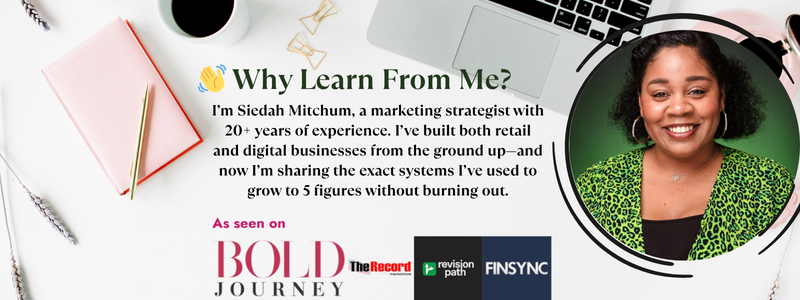
If you’re looking for a side hustle that can bring in extra income without draining your time, creativity, or energy, digital products are the answer. Unlike physical products, you don’t have to worry about shipping, inventory, or constant overhead costs. Once you create it, a digital product can sell again and again — on autopilot.
And here’s the best part: you already have knowledge, skills, or experiences that can be packaged into something valuable. Whether you’re a busy mom, a small business owner, or a creative professional, there’s a digital product waiting for you to create.
In this guide, we’ll cover how to identify the problem you can solve, examples of niche opportunities, tools you can use, and how to market your product before and after launch.
Why Digital Products Are the Perfect Side Hustle
Digital products are low-cost, high-reward. You create them once and sell them infinitely. This means:
-
No worrying about shipping or handling.
-
No ongoing supply chain or inventory costs.
-
The freedom to sell globally — from your living room.
-
Passive income that grows over time.
If you’ve ever thought, “I wish I could share what I know and get paid for it,” digital products are your golden opportunity.
Step 1: Identify the Problem You Can Solve
Every successful digital product solves a specific problem for a specific group of people. The mistake many people make is trying to create something “for everyone.” Instead, focus on your niche.
Ask yourself:
-
What do people ask me about all the time?
-
What skills or experiences do I have that others struggle with?
-
What shortcuts, templates, or knowledge have I created for myself that could help someone else?
Example 1: The Daycare Provider
If you’re a daycare provider, you’ve already gone through the process of registering, opening, and managing a business. That’s knowledge people are willing to pay for. You could create an ebook, a YouTube channel, or even a course teaching others how to start their own daycare. Suddenly, you’re positioned as an authority in your field.
Example 2: The Jewelry Seller at Local Markets
Let’s say you’ve built a successful jewelry business at farmers’ markets and pop-up shops. That experience is incredibly niche, and other aspiring entrepreneurs would love to learn from you. An ebook or guide titled “How to Sell Handmade Jewelry at Local Markets (And Actually Make a Profit)” could sell like hotcakes.
Step 2: Choose Your Digital Product Format
Once you’ve nailed down the problem you solve, decide how you want to deliver it. Here are the most common digital product formats:
-
Ebooks/Guides – Step-by-step instructions, personal stories, or how-to knowledge.
-
Courses – Video or audio lessons broken into modules.
-
Templates/Planners – Editable resources like business plans, social media calendars, or pricing spreadsheets.
-
Workshops/Trainings – Pre-recorded sessions that people can purchase and replay.
Start with the format that feels easiest to create. For most beginners, ebooks are the perfect entry point.
Step 3: Outline First, Then Use AI for Support
Here’s a mistake to avoid: letting AI do all the work. AI is powerful, but your unique perspective is what makes your product valuable. Start with a clear outline of your chapters, lessons, or sections.
For example, if you’re writing an ebook about opening a daycare, your outline might look like this:
-
Introduction: Why Start a Daycare?
-
Registration and Licensing Steps
-
Setting Up Your Space Safely
-
Marketing Your Services Locally
-
Managing Payments and Parents
Once you have your outline, use AI tools like ChatGPT to expand your points into fully written sections. Think of AI as your co-writer — not your replacement.
Step 4: Tools You’ll Need to Create and Sell
You don’t need to be a tech wizard to launch a digital product. Here are beginner-friendly tools I personally recommend:
-
ChatGPT – For brainstorming, drafting content, and refining your ebook or course material.
-
Canva – To design beautiful, professional layouts for ebooks, workbooks, and templates.
-
Gumroad or Beacon – Simple platforms to host and sell your digital products. Gumroad is great for low-cost sales pages.
-
Amazon KDP – If you want your ebook to reach a bigger audience, Amazon Kindle Direct Publishing lets you self-publish and sell on Amazon.
These tools are low-cost (sometimes free) and beginner-friendly, which means you can launch your first product without a huge upfront investment.
Step 5: How to Promote Your Ebook Before Launch
Don’t wait until your ebook is finished to start talking about it. Build anticipation early. Here’s how:
-
Share your journey – Post updates on social media: “I’m working on my new ebook for daycare providers. What questions do you wish someone answered when you started?”
-
Collect emails – Create a simple landing page and ask people to sign up for early access or launch discounts.
-
Tease content – Share quotes, tips, or a sneak peek of your table of contents.
-
Engage your audience – Run polls, Q&As, or behind-the-scenes stories to get people excited.
When your ebook finally launches, you’ll already have people waiting to buy.
Step 6: Marketing After Your Launch
Once your digital product is live, the real work begins: consistent promotion. Here are strategies that work:
-
Leverage social proof – Ask your first buyers for testimonials and share them.
-
Use content marketing – Write blog posts, record YouTube videos, or create TikToks that naturally tie back to your ebook.
-
Create bundles – Pair your ebook with templates, checklists, or a bonus training for more value.
-
Offer limited-time discounts – Drive urgency with flash sales or special codes.
-
Run simple ads – A $5/day ad on Facebook or Instagram can bring new eyes to your sales page.
Remember, digital products don’t expire. Even months after your launch, you can continue promoting and selling them.
SEO Tips: Get Found Organically
To ensure your ebook gets discovered on Google and Pinterest, use keywords strategically. For this post, keywords like:
-
“side hustle digital products”
-
“how to make money selling ebooks”
-
“extra income from digital products”
Sprinkle these naturally in your blog posts, product descriptions, and pin titles.
Common Mistakes to Avoid
-
Creating without research – Always validate your idea by asking your audience or checking demand.
-
Overcomplicating design – Keep your ebook clean and easy to read. Canva templates are your best friend.
-
Not building an email list – Social media is unpredictable; your email list is your safety net.
-
Quitting too soon – The first month may not make you rich. Stick with it, refine, and keep promoting.
Final Thoughts: Your Digital Product Could Change Everything
Selling digital products is more than a side hustle — it’s a lifestyle shift. It allows you to share your expertise, build authority, and generate income while balancing motherhood, career, and life.
Imagine waking up to a notification: “You just made a sale while you slept.” That’s the freedom digital products create.
So, what problem can you solve? What story can you package into an ebook, course, or template? Your knowledge is worth more than you think — and now is the perfect time to turn it into extra income.




This is very educational , and I will save it for when it’s my time to make digital products. I learned so much
Thank you Jasmin. I’m so glad it was helpful.